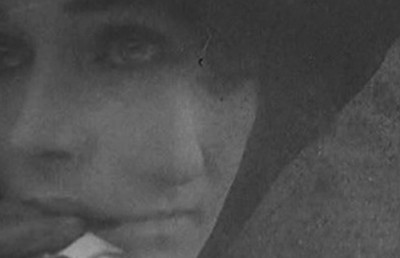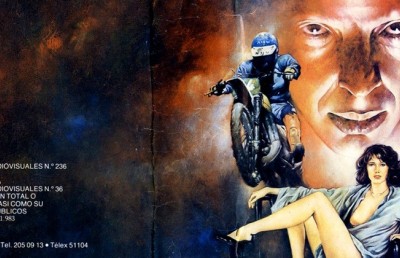Cinefest 2002: An Overview
Founder's presence still felt in its programming
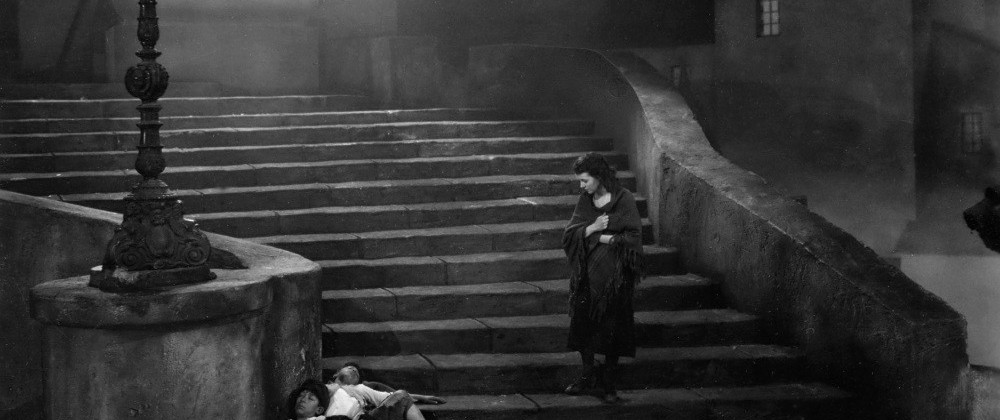
In the last issue of Offscreen we featured a tribute to the Cinefest Film Festival, in honor of the untimely death of its founder Phil Serling. Although Phil Serling was not present physically his presence was felt in the programming, which he had already completed before his death only one month before the event. What made Serling’s programming special was his willingness to listen to and take advice from the more academic people around him. People such as the late William K. Everson, Paolo Cherchi Usai, Chris Horak, Kevin Brownlow, and David Shepard. What this did was ensure that the programming would include at least a modicum of non American films and more esoteric or historically important (and less “entertaining”) films. When I say that the spirit of Phil Serling was present this past year, it is a reflection of this latter point. This was evident this year with such films as the German Asphalt _by Joe May, _The Childhood of Maxim Gorky by Mark Donskoi, the British but ostensibly German Piccadilly _by A.E. DuPont, and the fine British war-time drama _Convoy. It remains to be seen whether this will continue in the years to come. What follows is an assessment of some of the highs and lows of what was a wonderful four day experience this past March 7th to March 10th.
The Childhood of Maxim Gorky is the first of director Donskoi’s trilogy of films based on the autobiography of Russian writer Maxim Gorky. The other two being Among People 1939 and My Universities 1940. Historian Georges Sadoul aptly referred to this trilogy as an expression of “revolutionary romanticism.” Although the film is clearly a Russian socialist realist propaganda film depicting the harsh life during Tsarist Russia, it is far subtler than most socialist realist films, especially in its depiction of pre revolution Russian society and the elements which were targeted by Communist propaganda. The film is told from the perspective of the young Maxim Gorky, wonderfully played by Aleksie Lyarsky, as he tries to find joy and meaning in a household ruled by his oppressive and authoritarian grandfather, a wonderful performance by Mikhail Troyanovsky which subtly projects the volatile forces of Tsarist Russia. At different turns the grandfather is physically abusing his grandchildren, then acting childishly, and then making introspective or soul-searching comments. Counter pointing the hysterical grandfather is the sweet and forgiving grandmother, played by Varvara Massalitinova. The harsh life under Tsarist Russia is realistically depicted by the squalid art direction of Gorky’s childhood home, which is symbolically contrasted by the external natural landscape imagery, to which Gorky and his young friends escape. The film in fact concludes on a hopeful note with a sweeping high angle camera shot of Gorky and his friends walking through a Russian meadow, with majestic low angle shots of Gorky standing atop a hill, and a concluding long shot of Gorky walking alone along a dirt road which will lead to his revolutionary future. This future is represented in the anti-Tsarist chemist lodger who Gorky befriends. Gorky is attracted to the poetic and politically surcharged words of the chemist, who we later see shackled in a chain gang. When Gorky asks him why he is chained the chemist replies, you will soon come to know. In one of the earlier noted propaganda elements, a young gypsy man who helps Gorky against his oppressive grandfather is symbolically crushed under the weight of a cross he is forced to carry in a recreation of Christ’s carrying of the cross.
You have to take the good with the bad at Cinefest. _The Childhood of Maxim Gorky_was preceeded by a mixed bag of Vitaphone shorts, most of which remain interesting primarily for their historical or cultural value. The house was full for the shorts, but when Gorky started you would have thought someone yelled fire, the way people stood and left the screening room in droves. I was aggravated to say the least.
The film that won the William K. Everson award for best film and best director (the William K. Everson’s are ‘unofficial’ awards that have become a Cinefest tradition for a core group of Cinefest goers) was the outstanding Piccadilly, directed by A. E. Dupont and starring the remarkable Anna Mae Wong. Anna Mae Wong steals the show as Shosho, the scullery worker who operates herself to headlining act of the upscale nightclub Piccadilly (Dupont made another nightclub based film the year before, Moulin Rouge). When the headlining dance duo of Mabel and Tony is split by the latter’s departure for another venue, attendance begins to drop, forcing owner Valentine (Jameson Thomas) to consider other options. Shosho takes advantage of the moment and usurps Gilda’s position, as both headlining act and Valentine’s lover. I have to disagree with David Pierce of the BFI who in is introduction to the film stated that Piccadilly should be compared to the German film which played earlier, Asphalt, in its emphasis on atmosphere over plot. Undoubtedly Piccadilly oozes with atmosphere, but the film also contains more plot twists and turns than most of the films screened this year. In fact after the opening establishing scenes the film settles nicely into a moodily underscored cat and mouse affair pitting the mirroring sexual dynamics of Shosho and her Chinese lover Jim against Valentine and his initial lover Mabel. Once Shosho wins over Valentine with her bizarrely entrancing Chinese dance act (where Wong wears a gold-plated warrior-like suit that reveals far more than it conceals) the rejected jealous lovers Jim and Mabel are reduced to the shadowy world of nighttime London (the dangerous dark streets, alleyways, and drinking holes in the area known as Lime house, Chinatown, Shosho’s apartment, etc.).
The point at which the film turns and becomes plot-driven begins with Valentine’s visit to Shosho in her apartment, which intercuts with shots of a large silhouetted figure stretching up along the outside of the tenement wall waiting patiently (we later learn the figure is Mabel). After Valentine leaves the apartment Mabel confronts Shosho in a desperate attempt to win back Valentine. Mabel tries to appeal to Shosho’s common sense and female bonding. A part of the interesting dialogue exchange between them gives you a sense of just how fascinating and multi-layered the Wong character is. Mabel pleads with Shosho that things will not work out between them because he is much too old for her. To which Shosho replies, (I paraphrase), “I’m not too young for him, but you are too old for him.” In a quickly cut exchange Mabel fires a shot toward Shosho, who is defending herself with a lance. Shosho is found dead the next morning, and Valentine becomes the prime suspect. The film now shifts to a courtroom drama, where Jim, the key witness, becomes caught in an act of perjury. A flashback fills in the missing facts of the murder, and reveals that Jim murdered Shosho out of jealousy.
Like many great films of the late silent period, Piccadilly begins with a powerful opening which the rest of the film never quite matches (Peter Rist made this observation to me). But what saves Piccadilly from suffering significantly for this is how Dupont manages to at least develop thematically and narratively from the opening. The bold interrelated issues of race, class, and sexual politics, which forms the film’s real interest, is collectively introduced in the film’s extended opening sequence. Dupont crosscuts between fluid camera movements toward and away from the dancing performers in the center of the club and repeated circular arcs revealing the well-dressed denizens of the nightclub. The dance performance is interrupted by another ‘performance’ that is equal parts comic relief and class satire. In his feature film debut, playing his usual impeccably mannered self, Charles Laughton appears as an uptight, dainty, fastidious client who complains about a dirty plate. Laughton acts as if the world revolves around him, calling forth the attention of other customers, the servers, and the management. Everything about Laughton’s performance, from his haughty facial expressions and body movements, to the fawning staff around him, foreshadows the scene with the overly pompous and mightily overweight Mr. Creosote from Monty Python’s Meaning of Life (I was not the only person in my party to think the same).
After establishing the ostentatious surroundings of the performance area Dupont’s camera ‘drags’ us down the social-economic chain by consecutive scenes in the kitchen area and the dingy scullery area, where we are introduced to Anna Mae Wong’s character gyrating an impromptu dancing for her female co-workers atop a washing table. The film may not match this opening’s combination of visual flair and social meaning, but the combination racial-political-sexual tension resurfaces throughout the film (and who better to understand this tension than a German expatriate). The best example is the scene where Shosho takes Valentine to what the intertitle ironically refers to as the Lime house’s version of Piccadilly, a seedy, smokey, tension-ridden nightclub. Valentine understands the nature of his transgression when he observes the aggressive gestures toward a white woman who dared dance provocatively with a black patron. The woman is forced to leave the bar, and Valentine and Shosho, sensing they may be next, quietly exit as well.
Two other British films made this year’s Saturday 35mm Landmark excursion one of the best in recent years: the Walter Forde comedy Would You Believe It? and the early cinema short Blood and Bosh. The latter surprised everyone with its proto-modernist comic sensibility, and again recalling an uncanny parallel to the later comic troupe Monty Python. Blood and Bosh is a parody of the early cinema baby kidnapping/chase film, a model which became a template for dozens of early films because its structural form allowed filmmakers a narrative with which to practice shot-to-shot temporal-spatial editing (characters constantly running out one frame, into the next, etc.). But in Blood and Bosh the kidnapped baby is handled less as if it were a football (which in itself is a parody of the fake dummy babies used in these films). In one scene the baby is thrown out an open window landing next to a man who then repeatedly steps unsuspectingly on the baby. This irreverent use of violence would become a source of many gags for Monty Python. Also echoing Monty Python is the film’s reflexive parody on the form and convention of the chase genre. A mother is strapped down onto an oncoming band saw and left to die. What would normally be played for suspense turns absurd when the woman easily unties herself and slaps the flimsy, paper mache circular saw. Even the reflexive Pythonesque intertitles appear here. One intertitle follows a potentially violent moment with the words (paraphrased) “This scene has been excised by the local censorship.”
The comedy feature Would You Believe It? was my choice for best edited film at this year’s Cinefest. The narrative is merely a pretext for a series of connected comic set-pieces, culminating in an impressive montage sequence where Forde attempts to stop a remote controlled tank which is bulldozing its way past everything and anyone in its path while heading steadfastly toward the shack where a scientist and his daughter have been kidnapped and tied up. Forde works at a toy store but his real passion is inventing gadgets. His latest project is a radio remote control system, which he gives up on and kicks in frustration, which of course causes it to work! His invention is sought after by a spy ring whose ‘evil’ leader is modeled on Fritz Lang’s Spies and Dr. Mabuse. One of the film’s best set pieces comes when Forde is intercepted by members of the spy ring and chased down for the suitcase which contains his invention. The ensuing chase scene spans a never ending staircase, an elevator, and the London subway, with the suitcase yo-yoing back and forth until Forde finally retains it. Forde calls attention to the machinations of gag construction in the way he sets up the camera during the chase up the staircase. Rather than moving the camera vertically Forde keeps the camera static on the same single section of the staircase and merely cuts between Forde and his assailants running up the same staircase. Another funny scene, strongly reminiscent of Chaplin (especially The Pawnshop), occurs at the toy store where Forde mistakenly wraps up a baby doll and then unknowingly places a real baby in a box and shelves it precariously up high behind him above the counter (baby sounds avert his attention to the gaff). In the same scene Forde tries to accommodate an overly prim school boy’s ridiculous request to wrap a bunch of large balloons he has purchased, for a science project he duly points out. The more Forde tries the more tangled he becomes, ending up in a mess of string and paper.
In the film’s final scene Forde arranges to give the military a live demonstration of his remote control using a real tank. The spy ring sabotage the event, causing the tank to set loose on a rampage of destruction. The film cuts effectively between live action and miniature and concludes with an exciting montage which crosscuts between the advancing tank and the shack housing the tied up scientist and daughter. Forde follows the tank doggedly, frantically operating his remote control in an attempt to stop it from crashing into the house. Forde milks the suspense right to the end, with his friend/roommate rectifying the sabotaged equipment just in time and the tank stopping inches from the trapped victims. The film steals its final shot from Keaton’s The General, with Forde and the heroine seated on the front of the tank as it backs away from the camera (of course Griffith did a similar turn with a handcar in The Girl and Her Trust in 1912).
Another standout this year was the other non-Anglophone (non-US or UK) film, Asphalt (Maxim Gorky being the other). Asphalt _ (1929) begins stylishly with a city montage sequence and plenty of Germanic-styled subjective point of view shots before giving way to a more subdued, intimate Kammerspiel style. A Clara Bow/Louise Brooks look-a-like (Betty Amann) is shopping for jewelry. The storeowner, entranced by her salacious behavior, does not notice when a handful of diamonds fall to the floor. The woman uses the hollowed out bottom of her umbrella to steal one of the diamonds. She is eventually caught, but pleads poverty, which convinces the shopkeeper not to press charges. However, the arresting officer, played by Gustav Fröhlich, plays by the books and insists on bringing her to the police station. The woman asks if they can go by her apartment for her papers. Once in her apartment the seduction begins full throttle. The entrance into her sexual den is given special treatment with a slow, circular panning shot from the officer’s point of view. His resistance is admirable, but not impenetrable. She tries everything, including lying in wait in her bed. When all seems to fail and the officer is about to leave she hops out of the bed and literally jumps into his arms, melting his final resolve with passionate stares and heavy breathing. The theme is a common one in German expressionism: the fall/degeneration of the moral upstanding male at the hands of a woman (Pandora’s Box, Blue Angel) or social forces (_The Last Laugh, The Last Command, American but Germanic in feel). But May handles it subtly and with an erotic-sexual undertone one finds most strikingly in German cinema of the late twenties (Blue Angel, Pandora’s Box, Metropolis, Variety, etc.). The film also reflects social critic Siegfried Kracauer’s point on pre-Hitler German cinema about the presence of the weak male figure. The young officer’s moral and ethical resolve is broken down by the woman’s sexual advances, to the point where he accidentally murders the woman’s gangster lover in a fist fight after he returns home to unexpectedly find him there (the murder is shot through a mirror reflection). However, when the policeman returns home and tells his parents, the father, also a policeman, does not hesitate to don his police uniform and arrest his son. In the end, the police officer is exonerated by the woman’s guilt of complicity. She is arrested, and the final image sees her walking away along a corridor filmed through a prison-like door. As an historical aside, in an underground scene where city workers lay out asphalt, we see a sinewy camera movement along the ground that foreshadows the similar documentary-like camera movements in Pabst’s Kammeradscahft (1931).
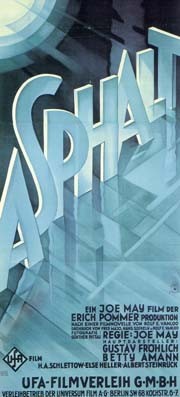
Asphalt
An archetypical example of the sort of timepiece from the pre-politically correct days that sometimes makes Syracuse feel like a wicked guilty pleasure is the mockumentary-comedy Sightseeing in New York (1931). A well know vaudevillian act Nick Basil and Tony Martin play a couple of Italian immigrants taking two schoolteachers on a carriage tour of the ghettoes and neighborhoods of Lower Manhattan, including the Lower East Side, Chinatown, and Little Italy. When they ride through Little Italy they tell us that the people may be poor, but they are hardworking and value the simple things in life. Chinatown and the Jewish ghetto don’t get off so easily. In fact, they become fodder for an array of terrible puns, ethnic stereotyping, and racial slurs, all in good fun of course. Referring to the Jews they say, “These people rely on their wits…their Horowitz, their Rabinowitz, etc.” They observe that the Brooklyn bridge shares a special kinship with a Jewish holiday (“Passover”)! As the catalogue notes say, Herb Graff would have loved this one!
Convoy (1941), a co-production between Ealing Studios and RKO, is a well-made, well-acted World War 2 action drama with Clive Brooks as the captain of a lead convoy ship engaged in a battle of wits with a much larger German battleship. While the characteristic qualities of war-time “Britishness” were in evidence –tough, resilient, calm and collected under pressure, and always with time for tea- the Germans were at least depicted as humans with feelings and personality.
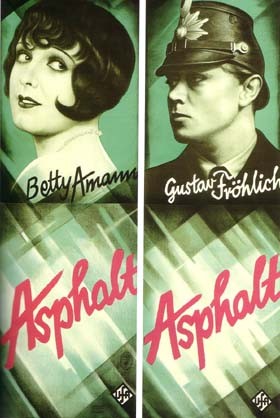
One of the minor patterns running through this year’s festival was the correlation between interesting and fun films and sexually promiscuous or anti-social characterization. In several films we are introduced to a central character who ‘misbehaves’ in one of the above manners. While the character runs loose the film is quick, nasty, and fun. At a certain point in the narrative the character is tamed, usually by love, and the film takes a turn for the worse (or at least becomes more sedate). For its first half, The Girl in 419 (dir: Alexander Hall) was one of this year’s zaniest, wittiest, and most subversive films. Everyone in the urban hospital setting seems to take their work ethic from its leading surgeon, played by James Dunn, who spends more time bedding nurses than curing patients. The cynical receptionists would clearly love to be somewhere else. In the opening scene one of them responds to a request for a certain patient by barking out “He died at 6:00 PM,” and then curtly cutting the line. When the unconscious Gloria Stuart comes under the good doctor’s care he gets a new lease on life and dedicates himself to saving the woman he has fallen in love with. No more sleeping around, womanizing, and no more humor. In The Wedding Song, one of those “zany gang of thieves” films, Leatrice Joy (slowly becoming a Syracuse favorite) is part of a motley gang of thieves who band together as a sham family to victimize people on a cruiser ship. Her job, which she does exceedingly well, is to disarm the potential male victim with her amorous charms. But when she truly falls in love with the man (played by Robert Ames), the film shifts gears and moves toward the climactic “redemption” scene in which Joy bravely removes a bomb planted by her accomplices under a home (and when she tosses it away the explosion causes an avalanche that snuffs out the gang!). In the Tay Garnett entry of the “zany rich family” film, She Couldn’t Take It, a bootlegger named Joe Ricardi (George Raft) meets and befriends an exasperated patriarch (Walter Connolly), who is (happily) imprisoned as a result of his family’s reckless spending. Ricardi becomes the sensible son the old man never had, and, on his deathbed, promises to become his family’s financial and moral guardian. Ricardi reluctantly agrees, leading to one of cinema’s funniest dying final words. As Ricardi reluctantly agrees to the dying man’s last wish, the old man utters, “Sucker!” Like the above films, She Couldn’t Take It loses some of its caustic edge once Ricardi falls in love with the daughter (Joan Bennett) and takes to the high reformist road. Funny to the end, however, is Billie Burke as the scatterbrained matriarch, a role she would perfect one year later in Gregory La Cava’s classic My Man Godfrey (1936).
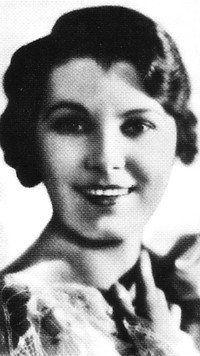
Leatrice Joy
In a similar domestic family comic setting, and a film which is sometimes credited as being the first screwball comedy, is Three-Cornered Moon, directed by Elliot Nugent (1933). The film is first rate all around, from its fine cast (Wallace Ford, Claudette Colbert, Richard Arlen, Mary Boland) to its witty script, but what left a bad taste in my mouth was the films’ decision to scapegoat the artist to make its Depression era message that “everyone must carry their weight.” The narrative curve of the film has the Colbert character evolve from loving and supporting the nonconformist values of artist Ford, who will not prostitute himself to a menial job for the sake of money, to loving the values of solidity and dependency represented by the good doctor Arlen. What makes her transformation especially unsettling is the accompanying sexual-gender politics. Colbert turns against her artist boyfriend in a cruel exchange where she criticises him for not wanting to work, while everyone else tries. But the issue is not working, but making money, since he does seem to work at his writing. But her change in attitude toward the artist comes after a scene where she is slapped across the face by the doctor, and then slowly caresses her face as if she enjoyed it. Later she recalls this moment when she expresses her newfound/New Deal philosophy to the doctor, “Life is sometimes like you Harold, it takes you by the arm and slaps you!” The film may be advocating the work ethic necessary during the Depression but, also, an unhealthy precedence is set with the carefree attitude toward domestic physical abuse.
One of the pleasant surprises this year was the great (debut) comic performance by Eddie Cantor in the entertaining comedy of remarriage, Kid Boots (1926, based on the popular vaudeville show of the same name). In a turn not unlike Woody Allen fifty years later, director Frank Tuttle surrounds homely Cantor with such beauties as Clara Bow, Natalie Kingston, and Billie Dove. And, against all reason, Cantor saves his friend from the clutches of gold-digger Kingston, while winning Clara Bow. Cantor stars as a sad sack tailor’s assistant. In an hilarious opening scene he is promptly fired and then given a second chance when another customer enters the shop. He ends up selling the man an appropriately inappropriate suit, with hangers intact! The film shifts comic gears on several occasions, from a Chaplin /Chase-like moment in a restaurant where Cantor convinces Bow that he is on a date with another woman by placing his table up against a door and ‘acting’ out the role of the absent date with his opposite arm jutting out from the door; to a Lloyd-like thrill comedy moment in the later scene staged with Cantor and Bow hanging precariously on a rope over a mountain side.

Leatrice Joy
The excellence of Frank Borzage’s Street Angel surprised no one. Set in Naples, Italy (or at least the Fox Film Studios version of Naples), Borzage raises the aesthetic bar on the romance genre with the sublime Janet Gaynor and wickedly handsome Charles Farrell, and combination Germanic set design and camera movement style. The opening scene lays the beauty out with a lateral tracking camera that moves along hesitantly from screen right to left picking out from the mist groups of city denizens. We imagine Naples and the artistry of Fox Studios art direction team, simultaneously evoking diegetic world and theme: the claustrophobic, fateful reality of poverty stricken “angel-turned-whore” Angela (Gaynor) and aspiring painter Gino (Farrell). After the opening lateral tracking shot, the scene cuts to the inside of a shoddy home, where Angela cares for her sick mother. A doctor informs her that she needs to buy medicine if her mother is to live. Penniless, Angela resorts (unsuccessfully) to prostitution and then robbery. She is caught and sentenced for one year in a workhouse, but manages to escape into the night, only to return to find her mother dead. She takes refuge in a circus, where she meets and falls in love with Gino. Gino paints a portrait of Angela, which he later sells to buy food. The painting takes on a mystical life and a journey which eventually leads back to the salvation of the estranged couple. The buyer of the painting has it forged by another artist to make it appear like the work of an important Old Master. Meanwhile the law catches up to Angela, who, unbeknownst to Gino, is arrested. Gino learns of Angela’s past from a vindictive prostitute, Lisetta, and the news shatters his faith in himself, women, and love. Broken hearted and embittered, Gino searches the wharf for prostitutes to serve as models so that he can paint women as they really are, “with faces of angels and souls as black as hell.” As fate will have it, he sees Angela, and chases her through the misty streets (echoing the opening) and into a church. He corners Angela up against the alter, with the intent of strangling her, before he catches sight of his painting hanging above the alter. Not recognizing the adulteration in his work, which makes Angela out to look like the Madonna, he says, “To think I once painted you like that.” To which Angela looks up at the painting and replies, “But I am like that still, look into my eyes.” He is now able to look into her soul, into her innocence, and realizes his folly. He lifts her up and carries her through the night fog. In this remarkable conclusion, a painting transcends its own imperfection and retains the power to transform hatred and bitterness into love.
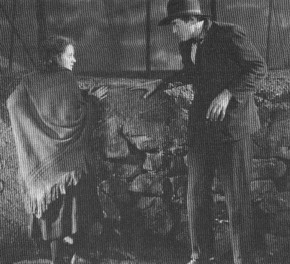
Street Angel
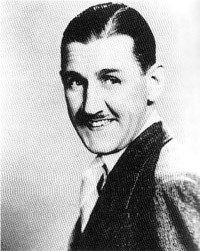
Would you buy a used car from this man, Charlie Chase?
I will conclude by fittingly shifting gears in such a way that typifies the eclecticism and irreverent programming which the late Phil Serling was so proud of. From the high spiritual designs of Borzage to the nutty charm of a Hal Roach two-reeler program that includes the pre-Laurel and Hardy Stan Laurel film Mother’s Joy, a typical (meaning funny) Charlie Chase situation comedy titled Leaping Love (1929), and the bizarre “The Boy Friends” short The Kickoff (1931). In Mother’s Joy, co-star James Finlayson disapproves of his daughter’s recent husband, a slightly elderly looking Laurel sporting a large walrus moustache. He is even more perturbed when she returns home with a child, played by Laurel in baby clothing (foreshadowing the later Laurel & Hardy sound short Brats). Finlayson kicks them out on the street, but has a change of heart later in life. Laurel returns home as the prodigal son, and causes havoc sabotaging Finlayson’s attempts to marry him off. In the strongest of the shorts, Chase stars as a womanizing crooner who gets himself entwined in an awkward situation when his new girlfriend’s mother begins flirting with him. Unable to resist, he can only encourage the pseudo Oedipal scenario (which leads to some funny facial expressions on the part of Chase). The short contains one hilarious running gag that takes place at the dock area where he first meets the mother returning from a ship cruise. Chase continually runs into the same poor chap quietly walking along the peer with flowers in hand. With each encounter Chase helps him gather his increasingly dwindling bunch of flowers. The topper comes when Chase lets loose a wheelchair that crashes into the man sending him into the ocean. In The Kickoff circumstances force two athletically challenged pals “Boy Friends” (Mickey Daniels and Grady Sutton) into a college football match. As per the conventions of the college short, a fix is on the game, with local thugs having kidnapped both the team’s coach and star player. The Boy Friends somehow save the day in a slapstick bonanza climax which features the whole football team storming the kidnappers and creating more havoc than the proverbial bull in a china shop.
The above can only scratch the surface of the forty plus features and shorts that played at Syracuse Cinefest 22. On Friday evening the programming took a rare break from the constant projector whir to pay tribute to Phil Serling, with friends and family taking to the microphone to reminisce and share their memories of Cinefest’s late “good friend.” The guests came from across the many worlds that Serling was a part of, theatre, boxing, and cinema, including Canada’s own boxing hero, George Chuvalo. The event was touching and heartfelt, but with the spirit of rejoicing that was in keeping with Serling’s nature. In the end, as Serling, Graff, Larson, and Everson would have wanted it, the films are what we take home with us. So it was business as usual at what Serling would wryly call the world’s “unknown film festival.” With Serling gone, we can only hope that, indeed, “business as usual’ remains the order of the day for many, many years to come.





